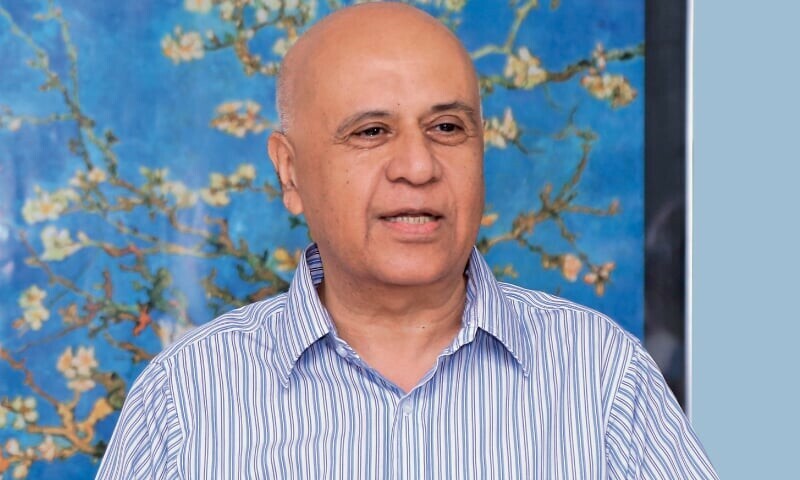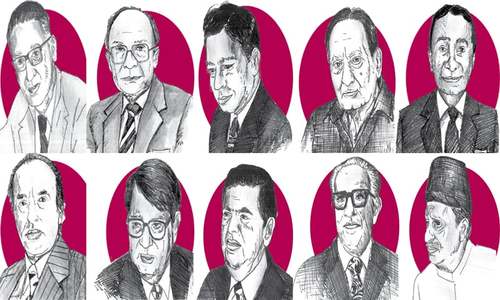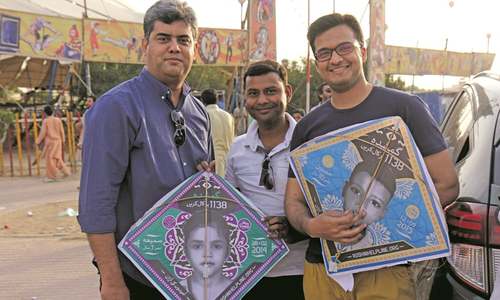In Real Time
First published in Aurora’s first edition in July 1998.
Aurora: In the 20-odd years that you have been heading Spectrum, what would you say are the most important changes that have affected the advertising industry in Pakistan?
Shahnoor Ahmed: The impact of satellite. This has completely changed the market situation. Suddenly, instead of living in a cocoon, Pakistan is exposed to what the rest of the world is doing in advertising terms. Prior to that, agencies imported reels to watch new trends in advertising, with the result that only they and their clients were in a position to compare. Now, with satellite, a new situation has arisen because the consumer can see the quality of advertising produced internationally and compare it to what is being done in Pakistan. This has changed the way Pakistani advertising agencies approach the making of commercials. They know they are being judged by a new set of criteria. The expectations of the viewer have changed and agencies are feeling the pressure of meeting these expectations.
A: But has Pakistani advertising really changed? Can you pinpoint one or more commercials that have actually been influenced by satellite?
SA: There are a number of restricting factors here. The size of the market and the economic situation. To keep up with the quality of advertising one sees on satellite TV means investing money and resources in the production process. In India, for instance, it is not unusual for a commercial to cost 40 lakhs, whereas in Pakistan a forty lakh commercial is a rarity. Also, Indian advertising had the benefit of having the film industry behind it. Technicians, production houses – all this is at hand. Prior to satellite, Indian advertising was poor, yet it improved dramatically. That change was due to satellite because Indians wanted to present India in the best possible light, one that would appeal to viewers of satellite television. It also means having access to talent. In Pakistan, good people in agencies move on because the agency cannot sustain them. There are client organisations which can offer more money and better benefits. If the advertising industry could afford to match these terms, it would be able to retain talented people. And in this way, the quality of what is being produced would improve. Then there’s the question of whether the client and the agency are prepared to take the kind of monetary risks involved to create that kind of advertising. But even if the impact of satellite hasn’t yet been fully translated into a new kind of Pakistani commercial, there has been a change in thinking and in time, this will be reflected in the quality of the commercials produced. That’s what’s important.
A: But how important is satellite? Aren’t the number of households with a dish still fairly limited?
SA: If one looks at who is buying value-added consumer products in Pakistan, it’s clear it’s people living in the cities – not the 65% of our rural population. They might buy specific products like pesticides, but when it comes down to consumer products and financial services, the market is dominated by Karachi, Lahore, Pindi and Faisalabad. That’s it. That’s the size of the market. You might have a population of 140 million, but the key buyers come from the urban centres.
A: Going back to your earlier point, it seems the impact of satellite has been to expose viewers to better commercials rather than sell more products.
SA: Both. Products are being produced in Thailand and sold in Karachi. An increasing number of products and services are being marketed regionally. Ahmed Foods, for example, is reaching out to the Middle East – Dubai in particular. Satellite TV often acts as an ethnic channel. In Dubai, it is mainly Pakistanis who watch Pakistani channels. This provides an opportunity for manufacturers to sell abroad by promoting Pakistani products. It may be just a beginning but the potential is there. In America, for example, there is a market for biscuits made in Pakistan because many Muslims are concerned that American biscuits might contain lard. If it’s made in Pakistan, they’re sure the biscuits are lard-free. There are so many food items in shops in the States that cater to Muslim and Pakistani preferences. That is a huge market but it’s also a niche market and that’s what satellite and cable are about.
The second important change to have taken place in the last 10 years are foreign affiliations. That’s a major milestone. In 1972, when the government decreed that no foreign agency could have an office in Pakistan, most foreign representation pulled out. The result was that until the mid-eighties, advertising agencies in Pakistan had to, in a manner of speaking, reinvent the wheel. While international agencies were developing new techniques, we in Pakistan were without any support system. It was only when affiliations began that Pakistani agencies discovered a new world of ideas on how to manage the advertising business. Advertising professionals came to Pakistan and people from within agencies went abroad. They interacted, learnt, and became more confident. All of which created more effective and better advertising. Affiliations have upgraded our industry in a major way.
A: How does a local agency qualify for a foreign affiliation?
SA: It varies. The common factor seems to be having a multinational account. The client usually prefers that their local agency has a commonality of approach with their international positioning. In our case, Colgate-Palmolive wanted us to have an affiliation with DY&R. To get this, we made several presentations. It wasn’t easy. International agencies are apprehensive about Pakistani companies. They apprehend that their name might be misused or they might be liable for something the Pakistani affiliate has done. They are also concerned about whether the agency is equipped to handle the kind of advertising that is being provided by the network worldwide.
A: Is equity always part of the deal?
SA: It depends. Some companies have had an affiliate for over 10 years but have not been given equity. Or the parent company has not accepted equity. In our case, DY&R and Spectrum preferred to allow a trial period of four years to elapse before going ahead.
A: Why?
SA: Pakistan is a small country. It’s almost insignificant on the map of any major worldwide network. So it’s important to ascertain whether the parent company is willing to give the support required to make the kind of difference one is looking for. Advertising at that level is not just a question of getting together to produce a commercial. It’s a science which requires managing different disciplines to be effective in the marketplace.
A: Does the parent company monitor performance?
SA: They do. We have financial monitoring systems, quarterly reviews, management and client reviews and training programmes. We follow the DY&R guideline that at least 25% of our staff members must be identified as rising stars. So one has to make an investment in those people who will become the key players in every aspect of the business. We send our executives to DY&R Singapore for training. We hold regular workshops often led by international experts. These workshops are very well structured. It’s not just talk. They are very interactive and very, very intensive.
A: So agencies are beginning to invest in people?
SA: Yes. If one trains eight people per workshop and one conducts 10 workshops a year, about 80 people are trained by the end of the year. Then one hopes that by the following year one has retained at least 40, while the other 40 have gone to other agencies. But that doesn’t matter, because the industry is being enriched. As for international training, this goes beyond rising star level to a core group of eight to 10 people who get the maximum exposure in terms of training and ideas on an international scale.
A: But is this investment in people restricted to just a few agencies or is it happening across the board?
SA: Across the board. We have a number of people who came from other agencies who had sent them abroad for training. Today, multinationals are demanding more from their agency. Even national companies which are in a highly competitive marketing situation are demanding more from their agency. If you want to meet that demand, it cannot be done just by the head of the agency. I know I can’t personally meet the requirements of all my clients so I have to be able to send them executives who will be able to do the job as well, if not better, than me. To do so, they must be confident. They must know their job. Training is now part of an agency’s cost structure and it is expensive. Even if you hold workshops in Karachi for eight people, you have to book a hotel and give your executives two days off. But that is the key to success. Advertising is changing. If an agency doesn’t keep up, another will. If it doesn’t invest in its staff, there will be others who will, and they will come out shining in front of the client.
A: What disappoints you the most about advertising in Pakistan?
SA: The economy, the uncertainty which makes long-term planning impossible. Everything is on an ad hoc basis. People look at short-term goals because the economic outlook is so uncertain; therefore, there is no long-term planning. Take now for example: everything is on hold because the budget is about to be announced. And then there will be something else. Look at the car industry. Suddenly, the government stops buying cars above a certain cc. Yet you planned your client would spend a certain amount of money in 1997 based on what was spent in 1996. Suddenly it all changes due to government policies. These are the factors which make our job difficult. If we could accurately estimate the amount of money we would earn in a given year, we could plan better and invest in many things.
A: What investment would you be looking at if you could plan?
SA: Technology and people. One may want to invest in a new area within the agency. For example, DY&R have spent millions of dollars to develop a tool called Brand Asset Valuator. We would like to specialise in this field, but to do this would involve, among other things, sending an executive abroad for training. Or we may want to upgrade our media planning department. But that means investing in technology and one begins to think: Is it worth it? Will it sustain itself? One becomes conservative. One doesn’t undertake new ventures as boldly as one should; in the end, one may have to do it anyway, but it’s the confidence that’s missing.
A: What encourages you the most?
SA: Foreign affiliations. For many years we had to reinvent the wheel. Today one has a tool kit at one’s disposal. Tools that enable one to be more precise about what one needs to communicate and how to communicate it.
A: What has been Spectrum’s greatest success? What has been its greatest failure?
SA: Our consistent growth over the years. It has been very solid and proven. I think that’s what attracts new clients to us. As for our greatest failure, I would say our inability to retain some very good talent – mainly because they were attracted by better salaries in the corporate world.
A: What has been the impact of the Citibank account on Spectrum?
SA: This is a very exerting account. It has brought us closer to our network. Because Citibank’s India and Pakistan accounts report to DY&R Europe, we are now working with DY&R Europe, not just DY&R Asia-Pacific. It has also brought us closer to DY&R’s headquarters in New York. Our work is now presented there as a matter of routine and not as a matter of excellence. Then there are the benefits of learning about what has succeeded in another market and being able to apply the same thing very quickly. A new development takes place in New York and you know about it the same day via email. We are that close to the network now. Things are happening in real time and we can respond to new ideas as fast as they are generated and apply them to Citibank Pakistan. Citibank’s objective is to become the single biggest consumer banking institution in the world. Their target is to have two billion customers worldwide by 2010. Spectrum will be contributing to achieve this target. This is very exciting.
A: In developing your campaigns, do you have to follow a set of guidelines given by DY&R?
SA: The account is locally driven. Every market has its own peculiarities. This is not a Coca-Cola or Pepsi situation where you have one product worldwide. This is multiproduct advertising ranging from car leasing to credit cards. There are guidelines in terms of layout and design but that doesn’t inhibit our creativity.
A: Do foreign affiliations help in acquiring clients? Do they shift automatically to the local agency?
SA: No, it’s not automatic. In Spectrum’s case, most of the DY&R clients were already with us. Citibank is the first client that has come to us through the DY&R network.
A: What has been Spectrum’s main contribution to the advertising industry?
SA: Our people. We have been the training ground for a lot of people. We are willing to take risks and hire people who have potential and put them in a position where they can create something. For example, we will encourage a person with potential to go ahead and make a commercial even though we know we could do it faster and more cost-effectively by going to a freelancer. We have the patience to experiment with people and keep on pushing them.
A: What is APG really doing apart from proclaiming its dissatisfaction with the PAA? What concrete steps is it taking? What has it achieved?
SA: APG was not formed as a parallel body to the PAA. The PAA is our trade body and we will continue to participate in their activities on a selective basis. Collective efforts are required to deal with specific issues. We did not participate in the PAA awards because we didn’t feel they were organisationally up to the mark. The APG is conceived as a club of like-minded advertising agencies who share ideas and try to find solutions to common concerns. The APG has held training workshops as well as media research workshops and has been instrumental in initiating the Establishment Survey, which Aftab Associates are about to undertake.
A: And finally, what is your favourite time of the day?
SA: Lunch.
A: Your favourite colour?
SA: Blue.
A: Your favourite dish?
SA: Tom Yum soup.
A: Your favourite agency?
SA: The D’Hamidi Partnership.




Comments (0) Closed